How the 9 Avatars of Durga Represent Different Phases of a Woman’s Life
Riya Kumari | Jan 11, 2025, 20:11 IST
Durga ma
Each stage is a reminder that womanhood isn’t one-size-fits-all; it’s an intricate, ever-changing journey. Durga’s avatars are a celebration of this complexity—showing us that we’re all divine, all powerful, and all capable of transformation at any point in our lives. When we look at these avatars, we see the divine feminine reflected in all its depth and richness. These forms aren’t just something to admire from afar—they’re a mirror, showing us the many facets of who we are and who we can become.
The 9 avatars of Durga aren’t just religious symbols—they’re a roadmap of every woman’s journey through life. Each avatar captures a distinct phase, representing the transformation we all undergo, from the innocence of youth to the deep wisdom of spiritual mastery. Durga’s many forms are the embodiment of strength, resilience, and power. But they're not static or idealized; they’re living, breathing stages that mirror the complexities of real life. In every phase, Durga teaches us that growth isn’t linear. It’s messy, powerful, and beautifully transformative.
1. Shailaputri: The Seed of Life
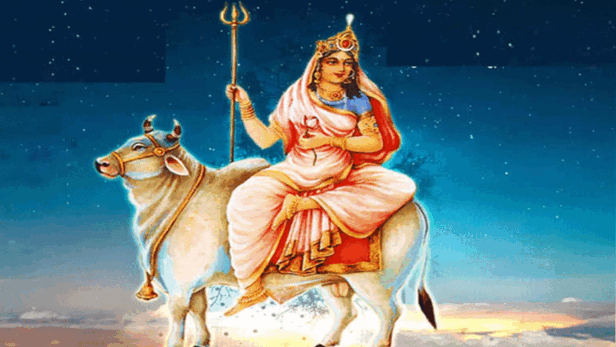
At the very beginning of a woman’s life—before the world has shaped her, before she’s been touched by the opinions of others—there’s the pure seed of potential. Shailaputri, the daughter of the mountains, represents the untouched essence of a woman’s soul. She’s the embodiment of innocence, purity, and potential. In this phase, she is untainted by the chaos of the world, carrying the spark of creation. It’s like the beginning of a story where the soul is full of promise, waiting to unfold into the fullness of life. This avatar speaks to the sacredness of every woman’s inherent being—the power that lies in the unformed, unspoken, raw potential of what she is meant to become.
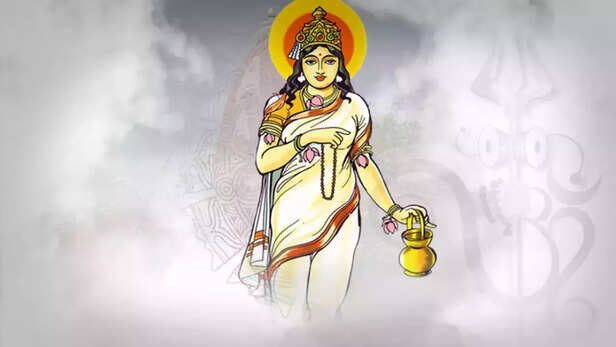
As we step into adolescence and early adulthood, we enter Brahmacharini’s realm. This is the avatar of discipline, austerity, and devotion. Brahmacharini’s path is one of inner growth, cultivating the foundation for spiritual and intellectual clarity. At this point in life, a woman embarks on her personal journey of self-discovery—whether that means diving deep into her studies, her career, or her spiritual practices. Brahmacharini reminds us that growth, whether personal or spiritual, requires dedication and self-discipline. It’s not about rushing or forcing things, but about devotion to the journey itself. This phase asks us to embrace the quiet moments of reflection, to nurture our inner wisdom, and build a strong, unshakable foundation for the future.
3. Chandraghanta: The Woman Who Seeks Balance
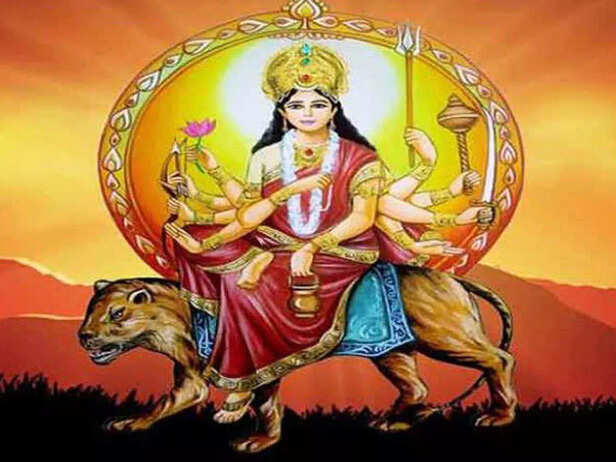
Now, life gets busy. Here comes the real balancing act. In this phase, you’re juggling different aspects of your identity—being a daughter, a partner, a friend, and possibly even a mother or professional. Chandraghanta, the goddess who wears a crescent moon on her forehead, embodies the energy of determination, willpower, and a deeply rooted sense of justice. This phase represents a woman stepping fully into her power, balancing the many demands of her life while maintaining inner peace and harmony. Chandraghanta calls us to find a balance between the world’s demands and our own needs. She teaches that you don’t have to abandon one for the other but can integrate and find purpose in all that you do.
4. Kushmanda: The Nurturer and Provider
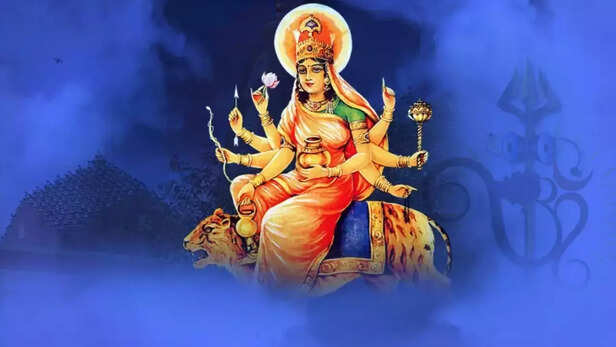
Kushmanda is the goddess who is known for bringing light and abundance into the world. In this stage, a woman often steps into her role as a nurturer—whether that means motherhood, guiding others, or providing support within a community. This is where the sacred feminine energy flows freely, and a woman becomes a source of love, wisdom, and sustenance for those around her. Kushmanda represents the universal truth that we, as women, hold the power to create life, to foster growth, and to nourish not just our bodies, but also the souls of those we care for. It’s about embracing your role as a provider of both tangible and emotional sustenance.
5. Skandamata: The Protector
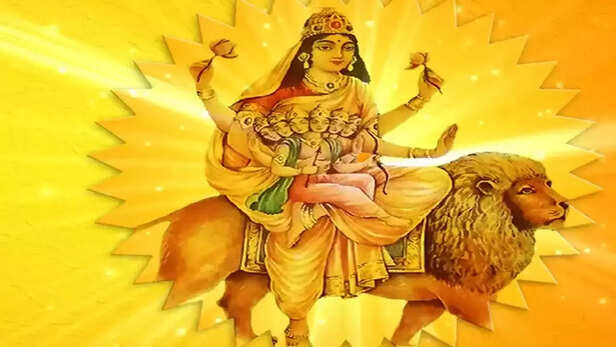
Skandamata, the mother of Skanda (the god of war), signifies the phase of protection and strength. As a woman matures, she becomes the protector of her family, her loved ones, and even her ideals. This is the stage when a woman is deeply connected to her responsibilities, her duties, and her commitment to the well-being of others. Skandamata teaches us that the divine feminine doesn’t just embody softness and grace—it also embodies fierce protection and the ability to stand tall in the face of adversity. Her strength is quiet, but it’s resolute. This is when a woman becomes her own shield, setting boundaries and creating safe spaces for those she loves.
6. Katyayani: The Warrior

Katyayani is the fierce goddess who leads with a sense of purpose and strength. In this phase, a woman steps into her power—unapologetically, courageously, and with an unwavering sense of self. She’s the one who fights for what she believes in, not out of aggression, but out of a deep sense of justice and righteousness. Katyayani symbolizes the warrior woman—one who battles for truth, for justice, for the greater good. She teaches us that the strength to stand up for what’s right, even in the face of overwhelming odds, is a divine gift. When a woman steps into this phase, she is ready to conquer whatever challenges come her way.
7. Kalaratri: The Transformative Power
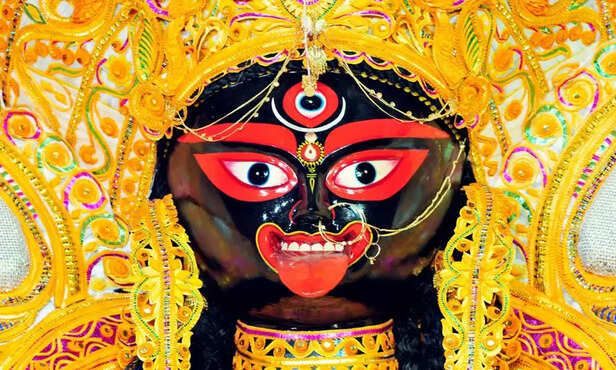
Kalaratri is often seen as terrifying, yet she represents the transformation that can only come through destruction. Destruction isn’t about annihilation—it’s about clearing the old to make way for the new. Kalaratri embodies that moment in life when everything falls apart, only to make space for rebirth and renewal. In this phase, a woman may experience moments of deep personal or spiritual upheaval. It’s the dark night of the soul where the ego is burned away, and a new, more authentic version of herself emerges. This is the power of transformation, and Kalaratri teaches us that sometimes, in order to grow, we must allow the old to die so the new can flourish.
8. Mahagauri: The Radiant Purity
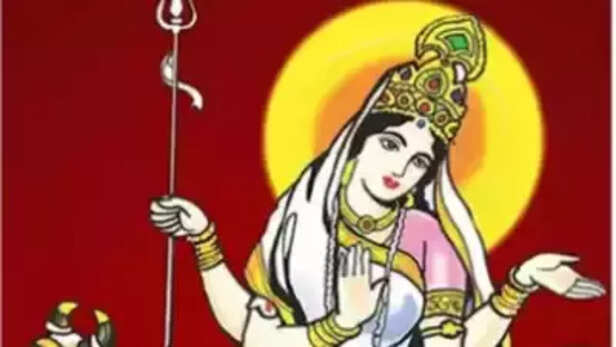
Mahagauri represents the purity of a woman’s spirit, one that has been refined through trials, hardships, and life experiences. After all the storms, all the battles, she emerges as a symbol of grace, inner beauty, and peace. Mahagauri teaches that purity doesn’t mean being untouched by the world—it means embracing your wholeness, imperfections and all. In this stage, a woman has learned to accept her past, her mistakes, and her triumphs. She radiates a quiet confidence that comes from knowing who she is and being at peace with it. It’s about reclaiming your inner light after the darkness has passed.
9. Siddhidatri: The Achiever of Divine Perfection

Finally, we reach Siddhidatri, the goddess of perfection, wisdom, and divine accomplishment. This is the phase of completion, where a woman fully realizes her purpose and power. She has attained spiritual knowledge, material success, and emotional wisdom. Siddhidatri is the ultimate embodiment of a woman who has walked her spiritual path with grace and strength. At this stage, a woman doesn’t just exist—she radiates divine energy, wisdom, and mastery over her own life. Siddhidatri teaches us that true fulfillment comes from a deep understanding of self, from achieving a sense of completeness in both the physical and spiritual worlds.
1. Shailaputri: The Seed of Life

Shailaputri
At the very beginning of a woman’s life—before the world has shaped her, before she’s been touched by the opinions of others—there’s the pure seed of potential. Shailaputri, the daughter of the mountains, represents the untouched essence of a woman’s soul. She’s the embodiment of innocence, purity, and potential. In this phase, she is untainted by the chaos of the world, carrying the spark of creation. It’s like the beginning of a story where the soul is full of promise, waiting to unfold into the fullness of life. This avatar speaks to the sacredness of every woman’s inherent being—the power that lies in the unformed, unspoken, raw potential of what she is meant to become.
2. Brahmacharini: The Devotee on a Journey

Brahmacharini
As we step into adolescence and early adulthood, we enter Brahmacharini’s realm. This is the avatar of discipline, austerity, and devotion. Brahmacharini’s path is one of inner growth, cultivating the foundation for spiritual and intellectual clarity. At this point in life, a woman embarks on her personal journey of self-discovery—whether that means diving deep into her studies, her career, or her spiritual practices. Brahmacharini reminds us that growth, whether personal or spiritual, requires dedication and self-discipline. It’s not about rushing or forcing things, but about devotion to the journey itself. This phase asks us to embrace the quiet moments of reflection, to nurture our inner wisdom, and build a strong, unshakable foundation for the future.
3. Chandraghanta: The Woman Who Seeks Balance

Chandraghanta
Now, life gets busy. Here comes the real balancing act. In this phase, you’re juggling different aspects of your identity—being a daughter, a partner, a friend, and possibly even a mother or professional. Chandraghanta, the goddess who wears a crescent moon on her forehead, embodies the energy of determination, willpower, and a deeply rooted sense of justice. This phase represents a woman stepping fully into her power, balancing the many demands of her life while maintaining inner peace and harmony. Chandraghanta calls us to find a balance between the world’s demands and our own needs. She teaches that you don’t have to abandon one for the other but can integrate and find purpose in all that you do.
4. Kushmanda: The Nurturer and Provider

Kushmanda
Kushmanda is the goddess who is known for bringing light and abundance into the world. In this stage, a woman often steps into her role as a nurturer—whether that means motherhood, guiding others, or providing support within a community. This is where the sacred feminine energy flows freely, and a woman becomes a source of love, wisdom, and sustenance for those around her. Kushmanda represents the universal truth that we, as women, hold the power to create life, to foster growth, and to nourish not just our bodies, but also the souls of those we care for. It’s about embracing your role as a provider of both tangible and emotional sustenance.
5. Skandamata: The Protector

Skandamata
Skandamata, the mother of Skanda (the god of war), signifies the phase of protection and strength. As a woman matures, she becomes the protector of her family, her loved ones, and even her ideals. This is the stage when a woman is deeply connected to her responsibilities, her duties, and her commitment to the well-being of others. Skandamata teaches us that the divine feminine doesn’t just embody softness and grace—it also embodies fierce protection and the ability to stand tall in the face of adversity. Her strength is quiet, but it’s resolute. This is when a woman becomes her own shield, setting boundaries and creating safe spaces for those she loves.
6. Katyayani: The Warrior

Katyayani
Katyayani is the fierce goddess who leads with a sense of purpose and strength. In this phase, a woman steps into her power—unapologetically, courageously, and with an unwavering sense of self. She’s the one who fights for what she believes in, not out of aggression, but out of a deep sense of justice and righteousness. Katyayani symbolizes the warrior woman—one who battles for truth, for justice, for the greater good. She teaches us that the strength to stand up for what’s right, even in the face of overwhelming odds, is a divine gift. When a woman steps into this phase, she is ready to conquer whatever challenges come her way.
7. Kalaratri: The Transformative Power

Kalaratri
Kalaratri is often seen as terrifying, yet she represents the transformation that can only come through destruction. Destruction isn’t about annihilation—it’s about clearing the old to make way for the new. Kalaratri embodies that moment in life when everything falls apart, only to make space for rebirth and renewal. In this phase, a woman may experience moments of deep personal or spiritual upheaval. It’s the dark night of the soul where the ego is burned away, and a new, more authentic version of herself emerges. This is the power of transformation, and Kalaratri teaches us that sometimes, in order to grow, we must allow the old to die so the new can flourish.
8. Mahagauri: The Radiant Purity

Mahagauri
Mahagauri represents the purity of a woman’s spirit, one that has been refined through trials, hardships, and life experiences. After all the storms, all the battles, she emerges as a symbol of grace, inner beauty, and peace. Mahagauri teaches that purity doesn’t mean being untouched by the world—it means embracing your wholeness, imperfections and all. In this stage, a woman has learned to accept her past, her mistakes, and her triumphs. She radiates a quiet confidence that comes from knowing who she is and being at peace with it. It’s about reclaiming your inner light after the darkness has passed.
9. Siddhidatri: The Achiever of Divine Perfection

Siddhidatri
Finally, we reach Siddhidatri, the goddess of perfection, wisdom, and divine accomplishment. This is the phase of completion, where a woman fully realizes her purpose and power. She has attained spiritual knowledge, material success, and emotional wisdom. Siddhidatri is the ultimate embodiment of a woman who has walked her spiritual path with grace and strength. At this stage, a woman doesn’t just exist—she radiates divine energy, wisdom, and mastery over her own life. Siddhidatri teaches us that true fulfillment comes from a deep understanding of self, from achieving a sense of completeness in both the physical and spiritual worlds.
